13 Global Ice Cream Styles You May Not Have Tried Yet
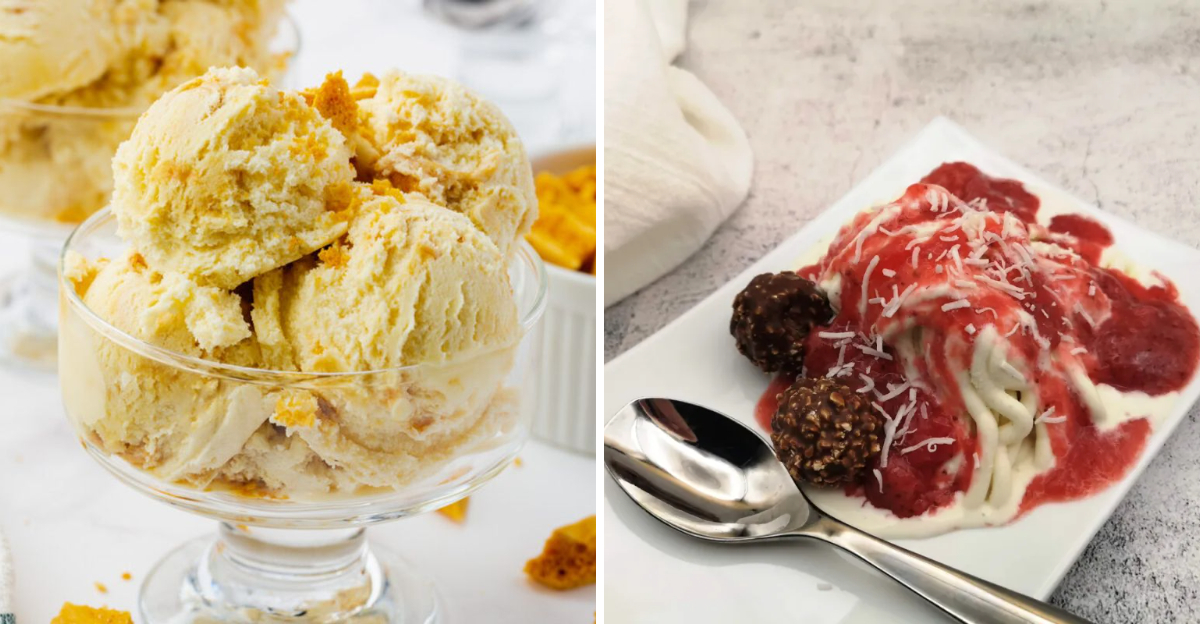
Ice cream comes in varieties across the world, beside the usual chocolate and vanilla. From stretchy textures to unusual flavors, different countries have put their own subtle spin on frozen treats. These global ice cream styles might just shift how you think about this familiar cold dessert. With their soft designs and regional charm, they offer a relaxed and interesting way to explore new tastes without straying too far from what you like.
1. Gelato from Italy

Italians have practice the art of dense, smooth frozen desserts with gelato. Made with more milk than cream, it contains less fat than American ice cream while offering stronger flavors. The slow churning process introduces minimal air, making that signature silky texture. Popular flavors include pistachio, hazelnut, and stracciatella (milk gelato with chocolate shavings). Found in gelaterias throughout Italy, authentic versions use fresh, seasonal ingredients without artificial additives. The lower serving temperature allows flavors to bloom immediately when its eaten.
2. Kulfi from India
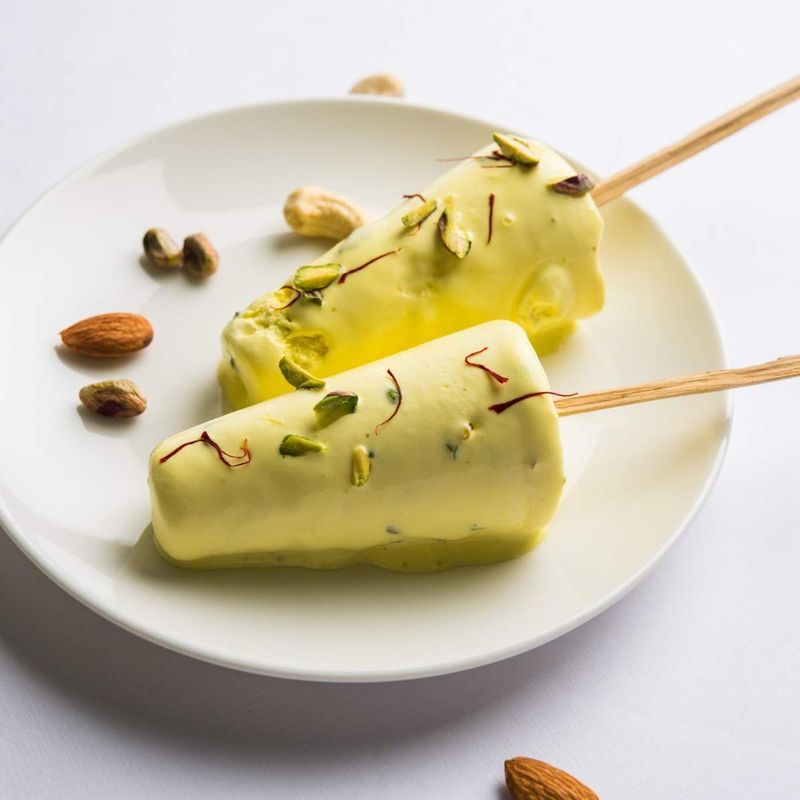
Kulfi stands apart from Western frozen desserts with its dense, custard-like consistency. Traditional preparation involves slowly simmering milk for hours until it reduces and caramelizes, developing rich flavors not easy to replicate with shortcuts. Common flavors include cardamom, saffron, pistachio, and mango. Unlike machine-churned ice cream, kulfi freezes solid in conical molds without mixing, resulting in a less airy texture. Street vendors across India serve kulfi on sticks or sliced on plates, often garnished with rose syrup, crushed pistachios, or falooda (vermicelli noodles). The slow-melting nature makes it ideal for hot climates.
3. Dondurma from Turkey

Turkish dondurma challenges what we think ice cream should be. Its stretchiness and resistance to melting come from two key ingredients: salep (orchid root flour) and mastic (tree resin). Vendors pound and stretch dondurma with long metal rods, incorporating air while developing its chewy texture. The consistency allows for playful serving methods where vendors tease customers with disappearing ice cream cones. Traditionally made in the Maraş region, authentic versions require constant movement during freezing. The resulting treat can be eaten with a knife and fork, lasting significantly longer in hot weather than conventional ice cream.
4. Mochi Ice Cream from Japan
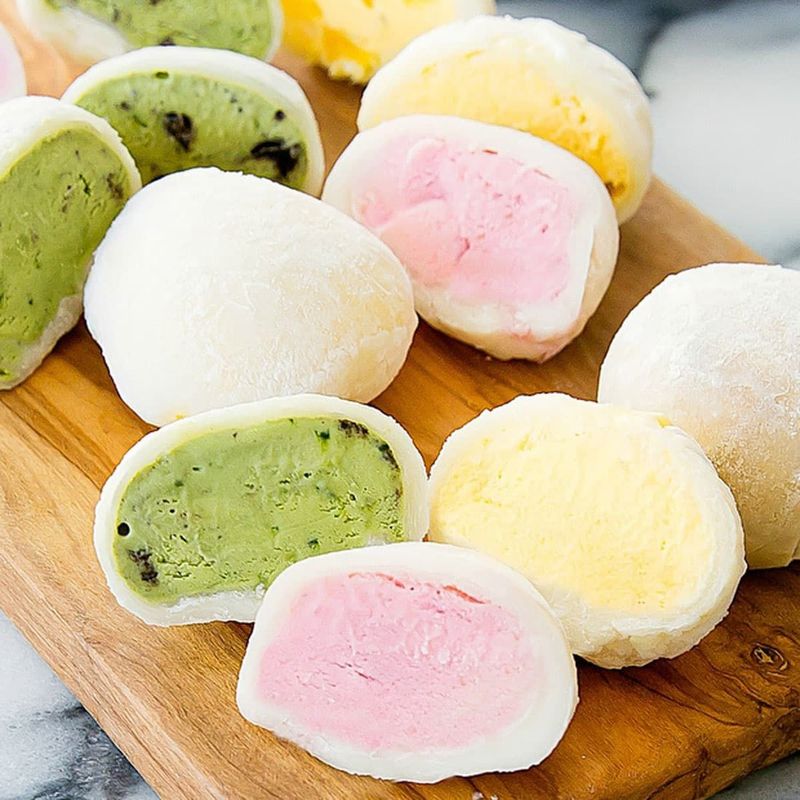
Japanese mochi ice cream wraps sweet, chewy rice dough around frozen cream centers. The glutinous rice is pounded until smooth and elastic, then molded around small ice cream balls to create bite-sized treats. Traditional flavors include matcha green tea, red bean, and black sesame, though modern variations incorporate flavors from mango to chocolate. The contrast between the soft, chewy exterior and cold, creamy interior makes for an interesting textural experience. Originally handcrafted in Japanese confectioneries, mochi ice cream has gained international popularity.
5. Paletas from Mexico
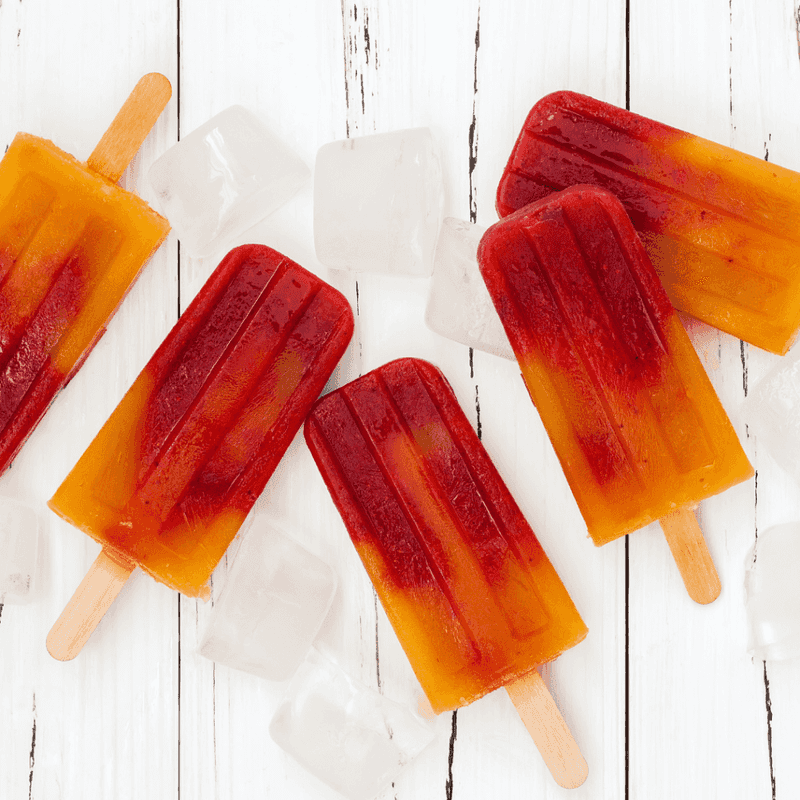
Mexican paletas enhances the popsicle. These frozen treats feature whole fruit pieces, nuts, and sometimes chili powder for more additive. Unlike mass-produced alternatives, paletas contain minimal additives. Milk-based versions (paletas de leche) feature flavors like coconut, cajeta (caramelized goat milk), and arroz con leche (rice pudding). Fruit-based versions (paletas de agua) showcase mangoes, watermelon, and tamarind. Paleteros (paleta vendors) with colorful carts are fixtures in Mexican neighborhoods. Regional variations reflect local ingredients – Michoacán.
6. Faloodeh from Iran

Dating back to 400 BCE, faloodeh claims the title of one of the world’s oldest frozen desserts. This Persian treat combines thin rice noodles frozen in a semi-frozen syrup infused with rose water, lime, and sometimes saffron. The preparation involves freezing the mixture partially, then scraping it repeatedly to make a granular texture surrounding the delicate noodles. Iranians typically squeeze fresh lime juice over faloodeh just before eating and sometimes pair it with saffron ice cream (bastani). Found in ice cream shops throughout Iran, particularly in Shiraz where it originated, faloodeh offers a refreshing balance of floral, sweet, and tart flavors.
7. Granita from Sicily

Sicilian granita occupies the middle ground between sorbet and shaved ice. This semi-frozen dessert has a distinctive coarse texture achieved by periodically scraping the mixture by hand during freezing, rather than machine churning. Traditional flavors reflect Sicily’s agricultural bounty – lemon, almond, coffee, and mulberry are local favorites. In eastern Sicily, especially around Catania, granita has a smoother consistency, while western Sicilian versions tend to be more crystalline. Locals often enjoy granita for breakfast alongside a brioche bun for dipping. During intense summer heat, granita stands as a refreshing alternative to heavier desserts.
8. Ais Kacang from Malaysia
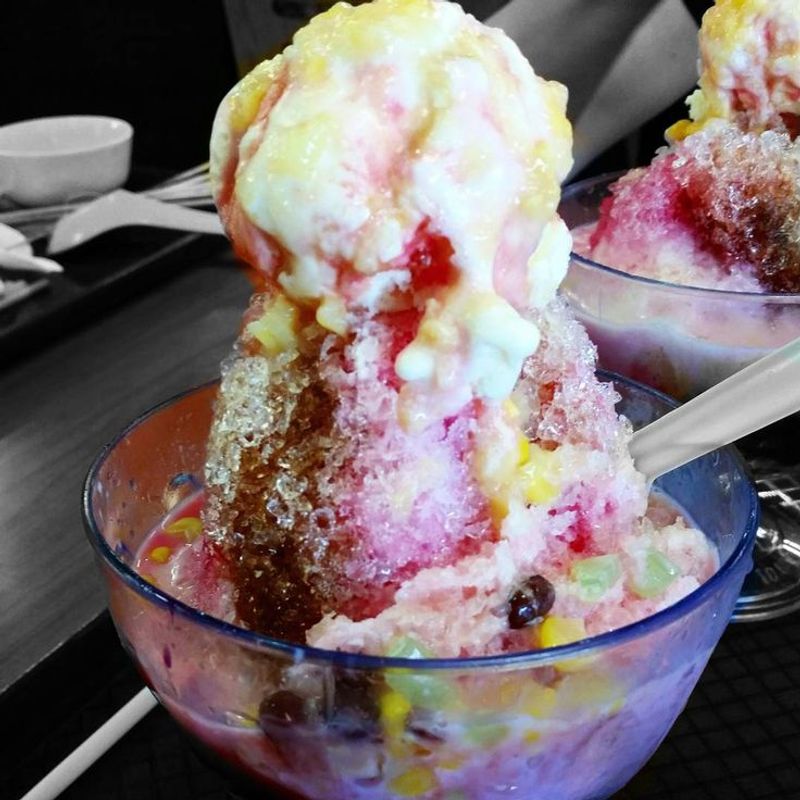
Malaysian ais kacang changes a mountain of shaved ice into a colorful dessert playground. Originally a simple combination of shaved ice and red beans, modern versions feature versatile toppings and textures. The base of shaved ice gets drizzled with rose syrup, condensed milk, and palm sugar, then topped with red beans, sweet corn, grass jelly, and attap seeds (palm fruits). Regional variations might include durian, jackfruit, or cendol (green rice flour jelly). Found in hawker centers throughout Malaysia and Singapore, ais kacang provides welcome relief from tropical heat.
9. Spaghettieis from Germany
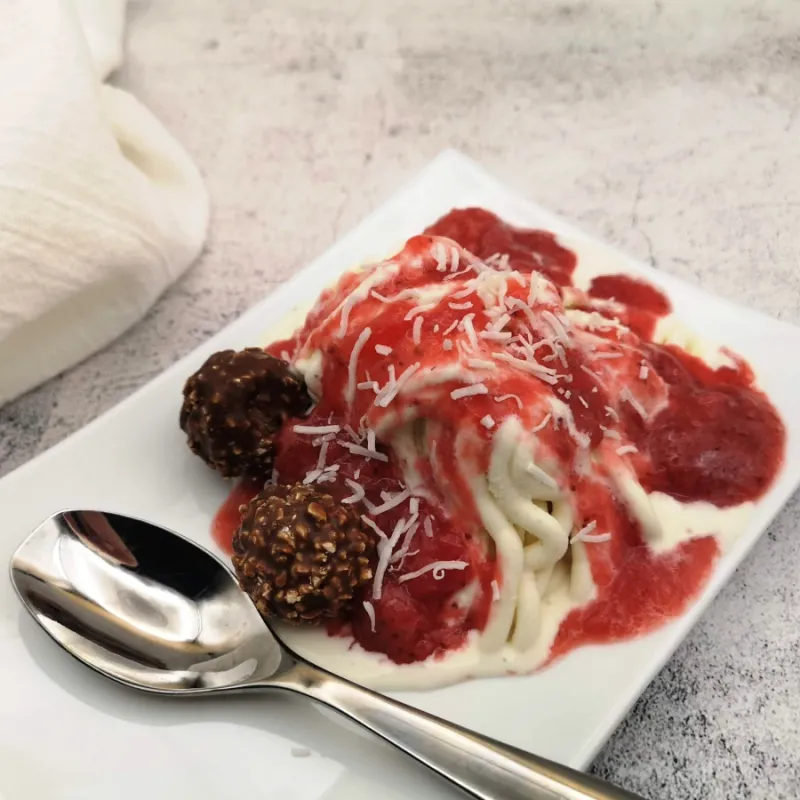
German ingenuity changes simple vanilla ice cream into a playful pasta look-alike called spaghettieis. Invented in Mannheim in 1969, it’s made by pressing vanilla ice cream through a modified pasta press, adding strands that resemble spaghetti. The “noodles” rest on whipped cream and get topped with strawberry sauce (mimicking tomato sauce) and white chocolate shavings or coconut flakes (resembling Parmesan cheese). Some versions include liqueur-soaked cherries hidden under the ice cream. German ice cream parlors (Eisdielen) consider spaghettieis a menu staple.
10. Hokey Pokey Ice Cream from New Zealand

New Zealand’s popular ice cream combines creamy vanilla base with chunks of honeycomb toffee called hokey pokey. The golden, crunchy candy pieces provide textural contrast and caramel flavor that has made this variety a national treat. Making hokey pokey involves boiling sugar and golden syrup with baking soda, which causes the mixture to foam and set with a honeycomb structure. When mixed into ice cream, some pieces remain crunchy while others partially dissolve, making caramel ripples. Available in supermarkets and ice cream shops throughout New Zealand.
11. Booza from Syria

Syrian booza demonstrates ice cream engineering at its finest. This stretchy, chewy frozen dessert predates modern ice cream by centuries, with techniques dating back to the 16th century Ottoman Empire. The secret lies in two ingredients: sahlab (ground orchid root) and mastic resin, which give booza its characteristic elasticity. Traditional preparation involves pounding and stretching the mixture in a freezing metal container while incorporating air by hand – a labor-intensive process requiring significant skill. Typically flavored with pistachio or ashta (clotted cream), booza resists melting even in hot weather. Served sliced rather than scooped, it maintains its dense, chewy texture throughout the eating experience.
12. Sorbetto from Italy
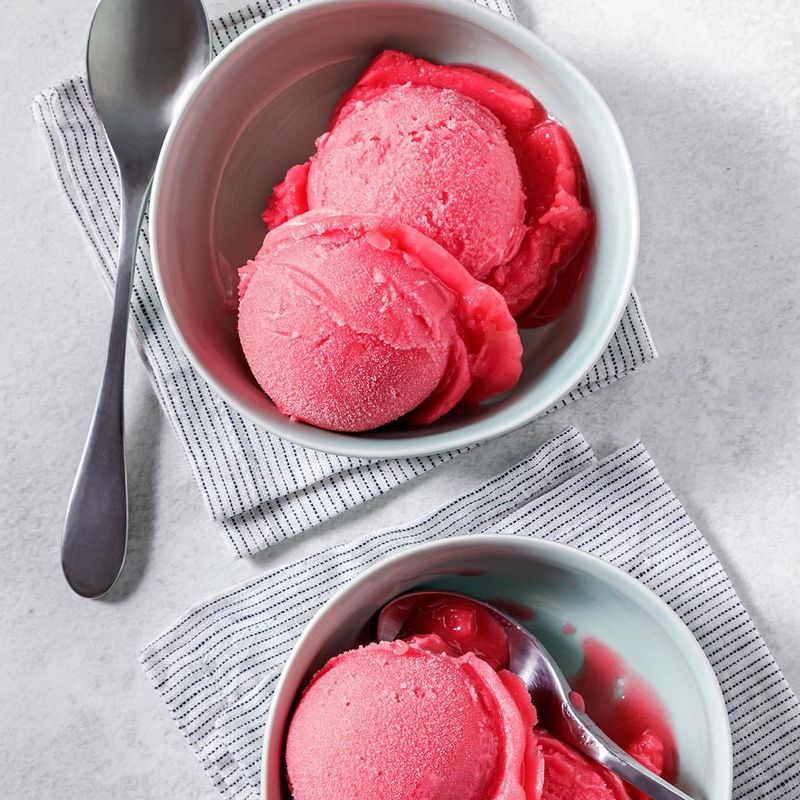
Italian sorbetto offers intense fruit flavor without dairy’s richness. Unlike American sorbet, authentic sorbetto contains less water and more fruit, making a smoother texture despite having no fat. Traditional preparation involves a careful balance of sugar, fruit, and water to achieve the right freezing point. Too little sugar results in ice crystals; too much prevents proper freezing. Lemon remains the classic flavor, particularly on the Amalfi Coast where local lemons provide intense fragrance. Often served as a palate cleanser between meal courses in Italy, sorbetto also functions as a lighter dessert option.
13. Rolled Ice Cream from Thailand

Thai rolled ice cream transforms ice cream making into street theater. Also known as stir-fried ice cream, the process involves pouring liquid base onto a freezing metal plate chilled to around -20°C. Vendors work quickly with metal spatulas, chopping mix-ins like fruit, cookies, or chocolate as they spread the freezing cream into a thin layer. Once set, they scrape the sheet into tight cylindrical rolls that stand upright in cups, topped with syrups, fruit, or cookies. Originating in Thailand around 2009, this style has spread globally through social media. The made-to-order nature allows for customization, while the rolling technique creates more surface area, resulting in faster melting and intense flavor release.
